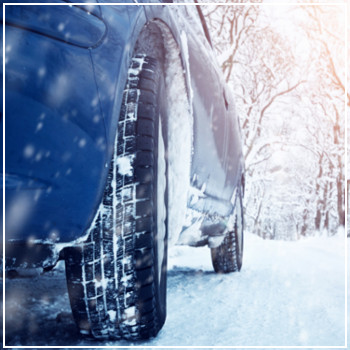 It’s no secret: Cold weather wreaks havoc on your car. From temperatures that shrink metal components and freeze fluids to corrosive salt on the road, your ride is exposed to a bunch of hazards that affect not just its appearance, but also its performance.
It’s no secret: Cold weather wreaks havoc on your car. From temperatures that shrink metal components and freeze fluids to corrosive salt on the road, your ride is exposed to a bunch of hazards that affect not just its appearance, but also its performance.
While it’s always a good idea to schedule a maintenance checkup once the weather warms up, preparation before the snow and ice set in helps your car through the season. Consider these six common issues:
1. Fluids Thicken
Cold weather causes your oil, transmission, antifreeze and other fluids to thicken, which in turn makes it harder for them to freely flow through your vehicle. In certain instances, such as with viscous transmission fluid, your car might not function or washer fluid becomes unavailable once temperatures drop.
What can you do in preparation? As a first line of defense, change all fluids before the weather turns really cold and make sure they’re at the right levels. Then, during the winter season, be sure to warm up your car for 10 to 15 minutes prior to driving. This allows the fluids to thin out and flow better, essentially making your car more reliable.
2. Batteries May Die
In the cold weather, your battery has to work harder when you start your car. You may be able to take off in a new model with little trouble, but if your battery is four or more years old, your car might not start.
As a preventative measure, have a mechanic recharge your battery before the season or replace it if it’s old. During the winter, try to store your vehicle in a garage, where it’s easier for the battery to warm up.
3. Tire Pressure Changes
Colder temperatures decrease your tire pressure – about one pound per square inch for every 10ᵒ F. When you’re driving on under- or over-inflated tires, this not only makes your car harder to control on slippery surfaces, but also results in uneven wear, which decreases its overall lifespan.
To avoid this during the season, make it a habit to regularly check your tire pressure – especially when the temperature drops sharply – and to inflate your tires to the right PSI.
4. Condensation and Ice
Both plastic and metal parts, including those inside your car, collect condensation. When it freezes, ice forms, expands and may cause parts to break or systems to malfunction. If your power steering, brake or transmission system is affected, leaks can result or fluids might not flow through correctly. When this occurs, your vehicle may malfunction and turn into a hazard on the road.
To avoid this, try storing your car in a warm place, such as a garage. Should you notice fluid leaking or notice your check engine light come on, make sure to schedule a maintenance appointment right away.
5. Corrosion from Salt
Drivers depend on salted roads to get through their morning commutes. Otherwise, icy, slick surfaces might result in a major accident. But, road salt sticks to your car, where it can corrode metal parts, including your undercarriage, brakes and wheel wells. If it seeps into a chip or dent, your paint job may also be marred by large patches of rust.
Make sure to thoroughly wash your car at least once a month during winter weather. Doing so not only rinses off the salt from the surface, but also removes it from the parts below.
6. Damaged Spark Plugs
Like your battery, spark plugs are also affected by colder temperatures, which can freeze them or damage the connecting wire. As a result, this part may not be as reliable once the temperatures drop, causing problems whenever you start your car.
To avoid this from happening to your vehicle, it’s recommended that you get your spark plugs inspected at the end of fall and have any older ones replaced.
Whether you’re getting repairs done during winter or need to make an appointment for spring, count on DaSilva’s Auto Body for affordable and comprehensive car maintenance. To make an appointment or to learn more, contact our Naugatuck location today.




